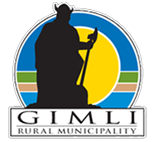The Icelandic Festival of Manitoba "Islendingadagurinn" as far as we have been able to determine, is the second oldest continuous ethnic festival in North America. Only an Irish festival held annually in Montreal is a few years older. The first Icelandic festival in North America was held in Milwaukee in 1874. The first Icelandic festival in Manitoba was held in Winnipeg in 1890; was held there annually until 1931, and since 1932 has been held in Gimli.
August 2nd was chosen for the festival date because on that day, in 1874, the first Icelandic Celebration in North America had taken place, and, in Iceland, a new constitution had been accepted. Early August was also convenient for farmers, as seeding was over, but harvest had not yet begun.
The first Icelandic Festival Parade was held on Saturday, August 2nd, 1890 on Nena Street in Winnipeg (now Victor), South of the First Lutheran Church at 10:30am. It was lead by the Infantry School Band, followed by four men in traditional Icelandic costume, carrying flags. They were followed by other men, then teenagers and children, but due to the terrible rainstorm the day before, most women rode in rented carriages to avoid the muddy roads. The parade left the First Lutheran Church to travel east on Ross St., south on Isabel, east on Notre Dame, north on Main St. and east on Rupert St. into the park by 11:30. Games and sports events then took place at the park, and the actual celebration began at 2:30pm.
At first, the Icelandic community could not agree on a date or a name for the festival. It was debated that July 16th would be a good date, since that was the day that the explorers in 1875 had reached Winnipeg. However, this date was of no significance to Icelanders in Iceland, and would alienate them from the celebrations. Thus, during a meeting on May 28th 1898 at the Northwest Hall, August 2nd, a historically significant date for both North America and Iceland was accepted to be the date for the festival.
By 1910, all disputes regarding the Islendinga-dagurinn in Winnipeg had passed and the event was firmly rooted in the community.
In 1924, the tradition of selecting a woman to be the Fjallkona began. The Fjallkona (Maid of the Mountain) is Iceland, and the Icelanders are her children. Mrs. Sigrun Lindal became the first Fjallkona of Islendingadagurinn. At the festival, the selected woman sits on her elevated throne, clad in the beautiful and dignified formal Icelandic costume of a white gown, green robe with ermine, golden belt, high-crowned headdress and white veil falling over the shoulders to the waist. Two maids of honour, formerly clad in plain Icelandic costume with tasseled skullcaps, are now dressed in white. In former years, these maids of honour were known as Miss Canada and Miss America.
1932 was the first year that the festival was officially brought to Gimli. Originally only to be an experimental move, the members of the Gimli community were eager to participate in the event. Gimli Park offered not only the aspects Winnipeg parks were missing such as outdoor space and shelter in case of rain, but it also offered a location quite within reach of other smaller Icelandic communities such as Selkirk, Arborg and Hnausa. At first, the major problem was arranging transportation to Gimli from Winnipeg. The committee of 1932 arranged with Winnipeg Electric Co. to supply 3 large busses, for a cost of $125.00, and additional busses at $35.00 each for transportation to the festival. Also, the C.P.R. agreed to negotiations of offering return fares at a cost of $1.25 per person.
In 1941, the two weekly newspapers printed a questionnaire for the pioneers to fill out and return to the secretary of the festival committee. Individuals who had been in North America for fifty years or more were introduced at the Gimli celebration and honoured accordingly.
Over the past 63 years, not many things have changed regarding the festivities. Even the parade and traditional program are at approximately the same time of day as they were over 100 years ago. The Icelandic Festival is still largely due to the efforts of hundreds of volunteers, who we are very grateful for. Hopefully the rich history of this event has only begun.
This information was aquired from the book Saga Islendingadagsins Islendingadagurinn: an Illustrated History published by The Icelandic Festival Of Manitoba. Written by historian Jónas Dór. For more infomation, this book is available through the Icelandic Festival Gift Shop located at 94-1st avenue, Gimli Manitoba.
